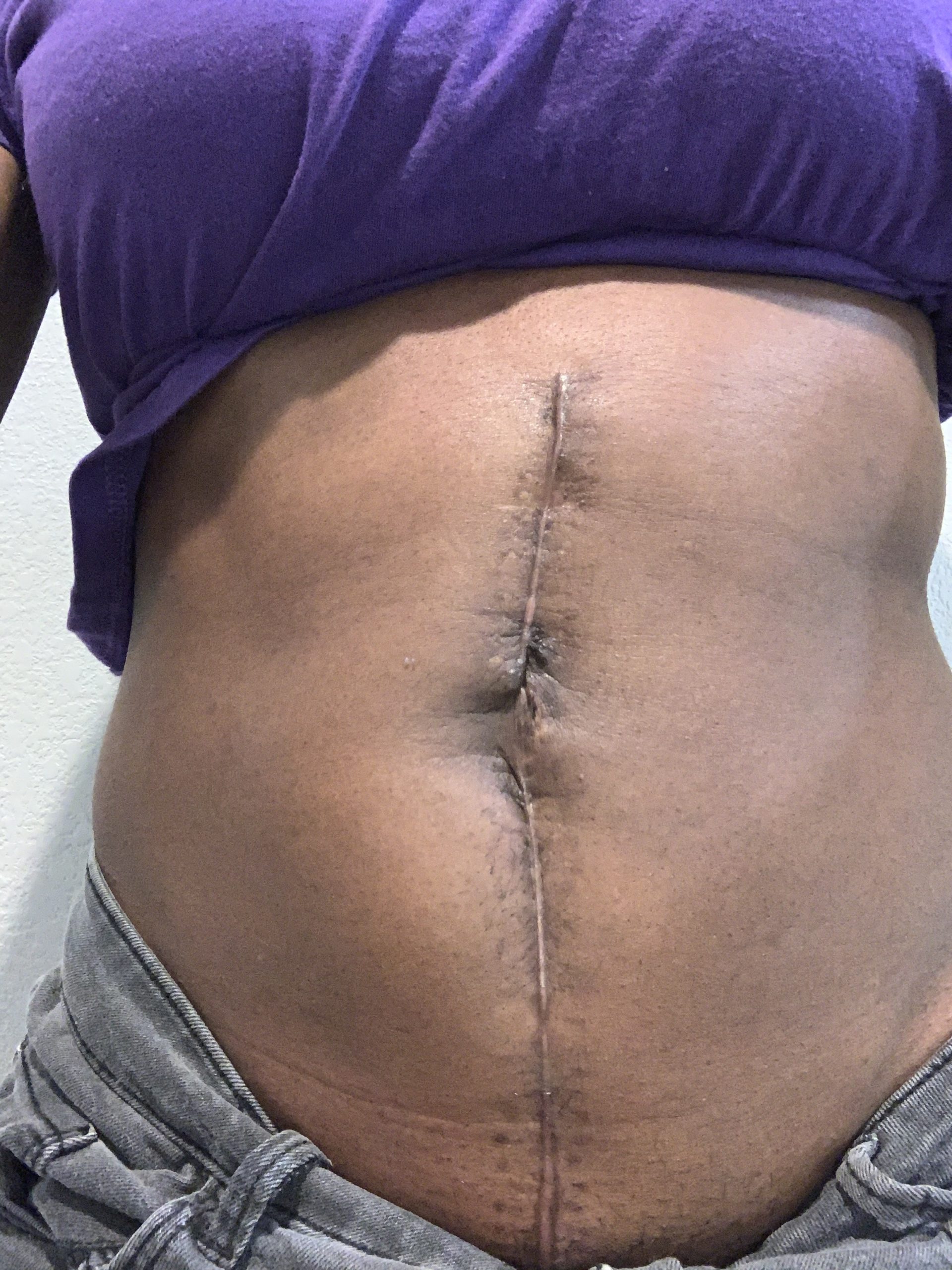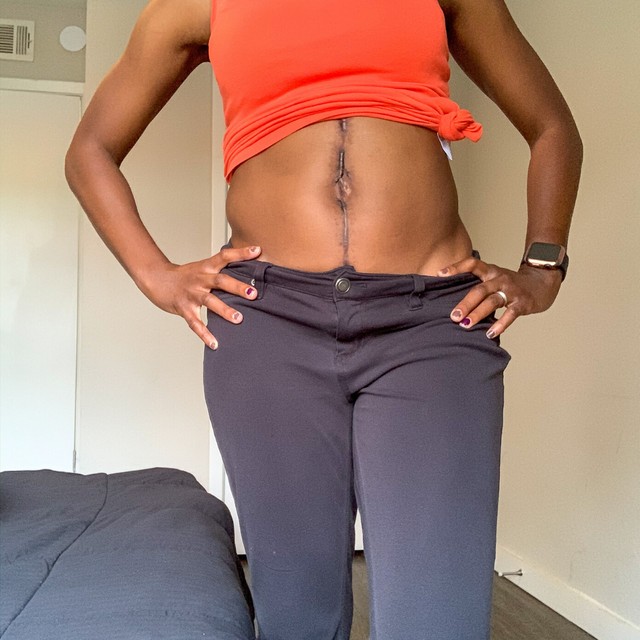Healing my laparotomy scar has been a journey. I have a hypertrophic scar that requires more work and time to fade. But, I’ve made significant progress, and two years post-surgery, my scar’s appearance has drastically improved. And the reason I believe I was able to get these results is because I remained diligent in caring for my scar using simple tools and methods.
Even to this day, I still have a skincare routine for my scar. And, while I’m honest with myself about my stomach never looking the same. Yet, I’ve experienced a surge in confidence because my laparotomy scar continues to fade. I include photos of my scar and how it’s progressed in today’s post. Additionally, I share some essential facts about reducing the appearance of your laparotomy scar post-surgery.
Page Contents
Post-Surgery Care to Decrease Appearance of Laparotomy Scar
If you want to decrease the appearance of your laparotomy scar post-surgery, proper care during the healing process is essential. Make sure you follow your doctor’s instructions regarding appropriate wound care. For example, keep the incision dry and take showers instead of baths to prevent the area from becoming wet, and keep the incision bandaged and covered until told not to do so.
Furthermore, if you have staples, you don’t want to tamper with them or try to remove them on your own. When the time is right, the doctor will remove them.
Additionally, you’ll want to avoid placing any tension on the area by refraining from stretching movements. Usually, you’ll not be allowed to do heavy lifting or strenuous exercise six weeks post-surgery.
Next Steps to Follow When Your Incision Is Healed
Although your incision has healed, you’ll want to continue caring for it because it takes up to 3 years (sometimes more) for the scar to fade and decrease properly. So, keeping the incision hydrated with creams and ointments will help continue the healing process. In addition, it’s a good idea to use products specifically designed to treat scars.
Suitable scar treatments include Mederma, Palmer’s Cocoa Butter Scar Serum, or silicone scar removal sheets and gels. My personal favorite has been Palmer’s Cocoa Butter Skin Therapy Oil. Additionally, massaging these gels, oils, and creams onto the area can help with the healing process. Using gentle circular motions, massage the entire length of the scar from top to bottom.
Lastly, make sure you’re using SPF 50 when outdoors. It’s essential to use SPF because it helps protect from discoloration.
Scars Take Time To Heal
The combination of genetics and time are the determining factors regarding how your laparotomy scar will look. It takes scars anywhere from three to six years to fully heal. And your genetics will determine how your scar will look during this healing process.
Generally, there are three types of scars that are most common post-surgery. The first is the fine line scar which appears as a raised line on the skin. Additionally, it can take fine line scars up to two years to flatten and become less noticeable. Next, there’s the widespread scar which looks flat and pale. However, it’s not as prominent as raised scars.
Lastly, there are hypertrophic scars (the kind that I have) which are thick raised scars that are red or brown and resemble keloids. Yet, unlike keloids, hypertrophic scars flatten over time and become less noticeable. Additionally, they can be itchy and restrict movement during the healing process. Furthermore, it can take up to three years for hypertrophic scars to heal and become less noticeable.
Regardless of the type of scar you have, moisturizing and using scar treatments will help heal and reduce their appearance.
Can A Laparotomy Scar Go Away Completely?
I think it’s important to be realistic when it comes to surgical scars, especially scars from major surgery such as a laparotomy. Your laparotomy scar may not completely go away. How your scar looks will depend significantly on the type of scar. Typically, fine lines and widespread scars will require less to fade, and hypertrophic scars will require more work.
However, proper wound care, keeping the scar moisturized, using scar treatments, and administering SPF help the healing process. Remember, scars take time to heal. Your body went through a major event, and you should give yourself some grace and remain patient during this process.
References & Related Reading
Family Doctor: Caring for Your Incisions After Surgery
Medical News Today: Hypertrophic scars Tips, prevention, and outlook
Medical News Today: Getting rid of old scars best home remedies
Medicine Net: Can surgical scars disappear?









This is such a gem to find, it is so good to see someone with a hypertrophic scar from a laparotomy a few years down the line from me. Thank you for posting!
You’re so welcome!
I had an emergency laparotomy 10 weeks ago following labour and my abdomen is very distended. I look like I’m 5 months pregnant. I don’t know whether this is due to my pregnancy or continual swelling following surgery. Were you very swollen afterward and if so how long did it take to go down? Summer is on its way and I am conscious about how I’ll look in tighter looking clothes etc
I didn’t experience any swelling, but I also wasn’t pregnant when I received my laparotomy. I know I’m late to this comment, but if you’re still experiencing swelling, talk to your doctor immediately. It could be swelling or it could be related to postpartum recovery. Blessings and love!
Thank you for sharing. I have an upper midline hypertrophic scar from a nephrectomy almost 2 years ago. It’s started to fade a bit, but I’m so self conscious about it and still won’t take my shirt off in front of my husband. This really helped me a lot.